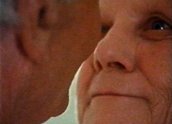


Age Before Beauty (1980)
Synopsis
Designed to provoke thought and discussion, Age Before Beauty examines the issues around ageing, as it relates to women. The film combines interviews with women (young and old), with observational footage and narration to cover topics like social perceptions of ageing, housing, health, sexuality and dignity. Along the way, it touches on the broader issue of the (then fledgling) industries surrounding the growing aged population – the aged care industry and the youth (or how to avoid ageing) industry.
Curator’s notes
Age Before Beauty was one of the first Australian documentaries to address the topic of ageing. With today’s increasing aged population, the ground it covers is familiar. This was by no means the case when the film was made. Prior to Age Before Beauty, Sarah Gibson and Susan Lambert had made Size 10, which looked at women’s dissatisfaction with their own bodies. Age Before Beauty was a logical follow up. Although formally not one of the strongest of the films made collaboratively by the two under their Red Heart Pictures banner, Age Before Beauty is generically and politically an important inclusion in their body of work. One of their earliest projects, the film was made at a time when the two were still exploring ways in which they might work and survive as feminist filmmakers.
A confluence of factors in the 1960s and 70s saw a major shift in the ways documentaries were both produced and viewed. Social and political reform, thwarted for decades by the First and Second World Wars, the Depression and the Cold War, was long overdue. Among young people, an awareness of the power of mass communication was growing as media studies entered curricula in schools and universities alike. At the same time the means of producing media, in particular film and television, were becoming less expensive, more portable and more accessible. The union of political action and documentary filmmaking was a natural one. Like many young women filmmakers of their generation, Gibson and Lambert had been active in the Women’s Liberation movement. When they first picked up a camera, it was with a view to reaching an audience of women at a grassroots level. But while the Australian film industry was undergoing its renaissance in the 1970s, developments were very much feature film and drama driven. For documentaries, reaching an audience was as tough as it had ever been. And for Gibson and Lambert, who preferred to broach what at the time were taboo media subjects, it was even tougher.
Age Before Beauty, produced with the assistance of the Women’s Film Fund, was designed as a low-cost production which would reach its audience not via any type of broadcast media or general exhibition, but via screenings run by community organisations and groups. Where once only a few of these groups had owned 16mm projectors, many were now investing in the latest low-cost viewing formats of three-quarter and half inch video cassette. And many were beginning to use film and video on a regular basis as a resource, in conjunction with community workers or facilitators, to educate, raise awareness or provoke discussion. Age Before Beauty, with its narration by Queenie Ashton of Blue Hills fame (an extremely popular figure for the generation depicted), skillfully targeted its audience and cleverly identified what was to become a huge social issue for most of the western world. Not only was the film successful on these levels, but it was also part of a vanguard of short films that ushered in an era of educational media production in the decade that followed.
- Overview
- Curator’s notes
- Video 3 clips

- Principal credits
- Find a copy
- Make a comment
- Add your review



